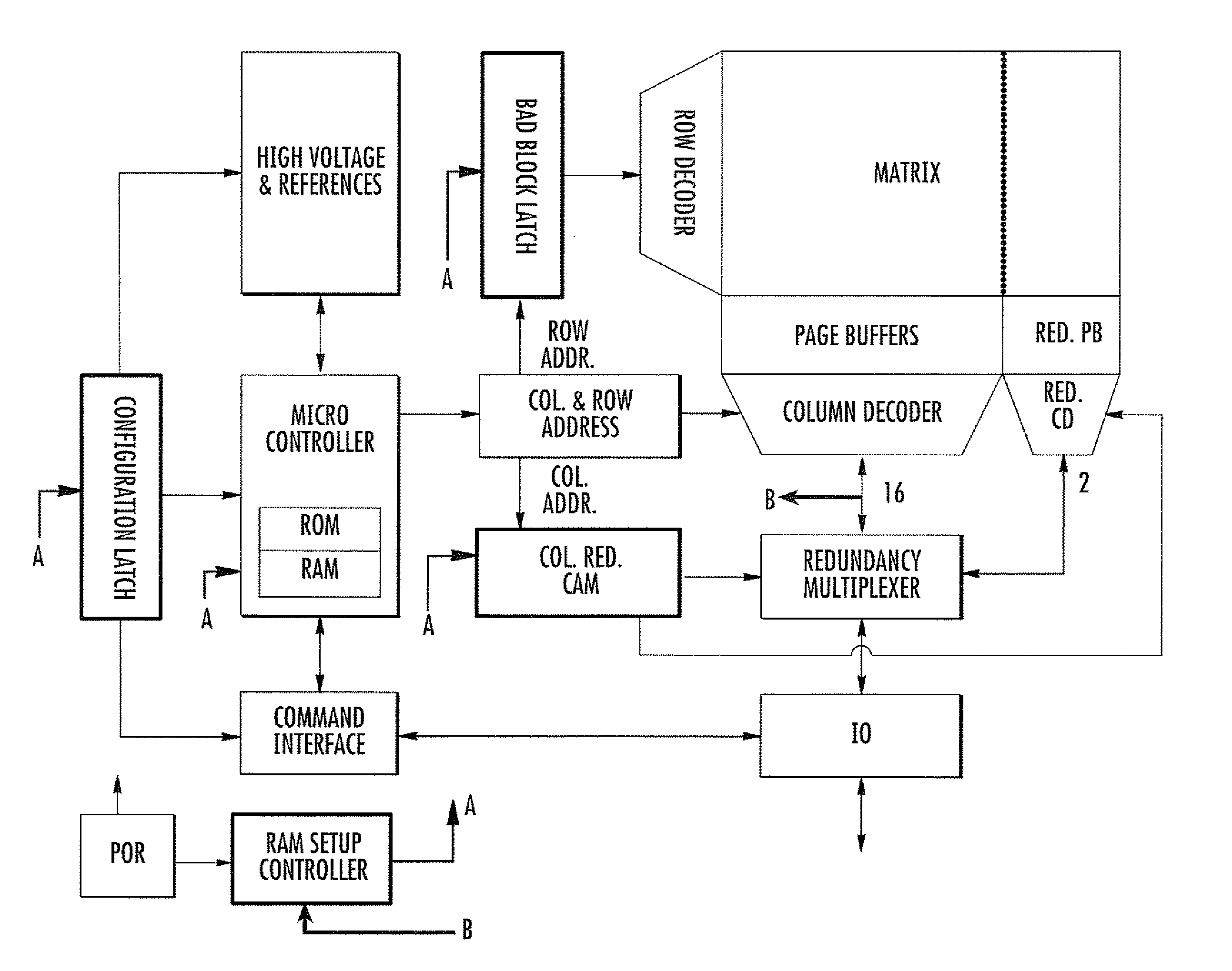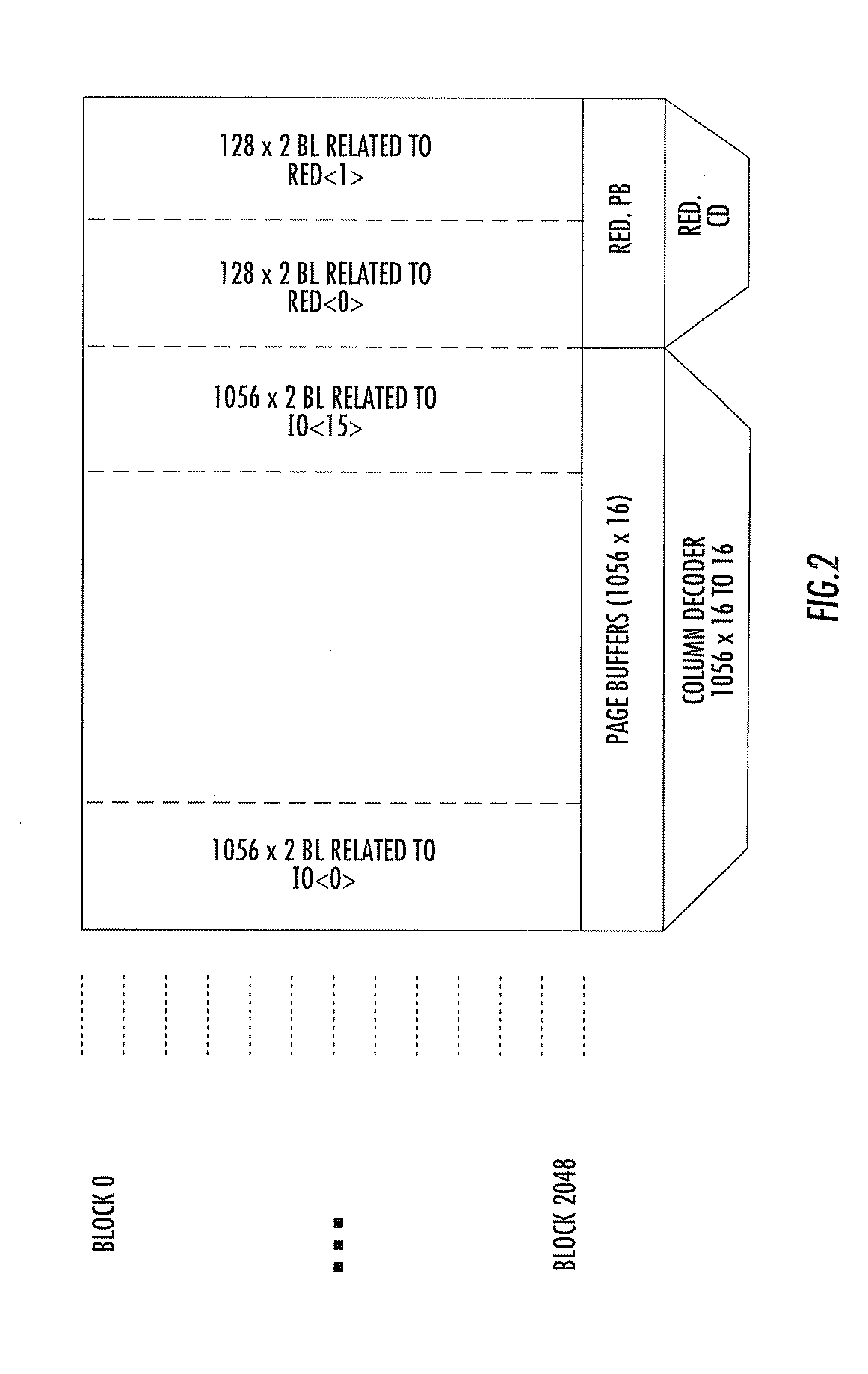NAND flash memory device with ecc protected reserved area for non-volatile storage of redundancy data
a technology of non-volatile storage and flash memory, applied in the field of memory devices, can solve the problems of reducing the yield of the fabrication process, affecting the operation life of the device, so as to reduce the silicon area requirement of the non-volatile memory device, and enhance the fabrication yield. the effect of the device's operating life characteristics
- Summary
- Abstract
- Description
- Claims
- Application Information
AI Technical Summary
Benefits of technology
Problems solved by technology
Method used
Image
Examples
Embodiment Construction
[0023] As graphically represented in FIG. 3, a reserved area RA (identified by the darkened field) that will not be addressable by the user of the EWS-tested, trimmed, repaired and finished memory device is part of the addressable area of the memory cell array. The reserved area RA may retain the same organization graphically defined in FIG. 2.
[0024] In FIG. 3, the dark dots indicate failed cells that cannot be utilized (as identified during the test-on wafer of the device), and the solid vertical lines represent failed bit lines of the array (as also identified during the test-on wafer phase). The basic redundancy data on the failed array elements identified during the EWS testing are written, during the EWS phase itself, in the reserved area RA of the addressable area of the memory cell array. This is identified by the darkened array area in FIG. 3.
[0025] The writing of the basic redundancy data in the reserved area is made with an ECC data writing technique according to a certa...
PUM
 Login to View More
Login to View More Abstract
Description
Claims
Application Information
 Login to View More
Login to View More - R&D
- Intellectual Property
- Life Sciences
- Materials
- Tech Scout
- Unparalleled Data Quality
- Higher Quality Content
- 60% Fewer Hallucinations
Browse by: Latest US Patents, China's latest patents, Technical Efficacy Thesaurus, Application Domain, Technology Topic, Popular Technical Reports.
© 2025 PatSnap. All rights reserved.Legal|Privacy policy|Modern Slavery Act Transparency Statement|Sitemap|About US| Contact US: help@patsnap.com



